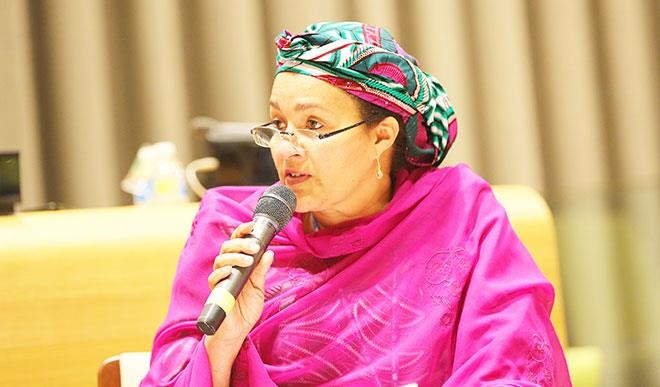
The Federal Ministry of Environment has said that Nigeria needs N44.7bn between now and 2030 to finance its Intended Nationally Determined Commitment (INDC) to reduce emission and low carbon for sustainable development.
The figure was arrived at after a stakeholders’ consultation meeting on the pilot issuance of green bonds in Nigeria as part of moves to explore innovative sources of funding for climate action plans, a statement from the ministry said.
“Creative channels for mobilizing resources locally and externally are needed. The issuance of Green Bonds, which have grown from $3bn per annum since 2012, to an estimated $100bn for 2016, presents a viable option,” the Minister of Environment, Hajiya Amina Mohammed said.
She said Nigeria needed vast investment for the transition to a sustainable, low-carbon and climate resilient economy, she said.
The Minister said that private finance was needed, highlighting the need to benefit from the international capital markets.
The minister said that her ministry of environment and the ministry of finance would work together to channel resources towards viable green projects.
According to the UNEP, green bonds have the potential to deliver the low carbon, climate resilient infrastructure needed in Nigeria such as renewable energy, low-carbon transport, and water infrastructure.
Access to private capital was essential to substantially lower the cost of capital for green projects and enable Nigeria to move to a less emissions intensive growth path, the statement said.
Speaking at the event, Mr Oscar Onyema, the CEO of the Nigerian Stock Exchange, said that there was significant market potential for green bonds in Nigeria as a developing market with a population in excess of 180 million people, with projected annual emissions of 900m tonnes, adding that the country required significant capital to develop mitigation and adaptation interventions.
He stated that green bonds could mobilise fund from investors who have strong environmental focus, valued transparency and had lower risk appetite.

 Join Daily Trust WhatsApp Community For Quick Access To News and Happenings Around You.
Join Daily Trust WhatsApp Community For Quick Access To News and Happenings Around You.


